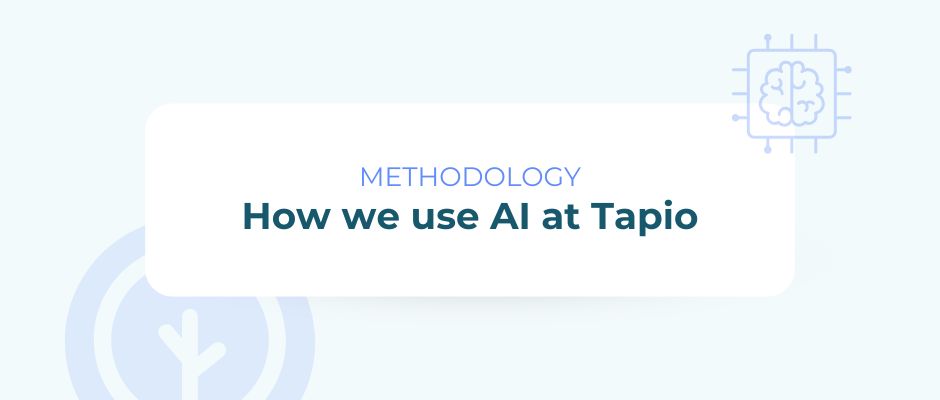How we use AI at Tapio
Reading time: 4 minutes
Reading time: 4 minutes

Artificial Intelligence (AI) is everywhere right now. From your business tools to even WhatsApp, AI seems to have become a must-have rather than an extra feature.
At the same time, tools like ChatGPT have received backlash for their heavy environmental impact, because they consume large amounts of water, energy and raw materials.
However, the way the word “AI” is used often creates misunderstandings: the term Artificial Intelligence includes more than just Large Language Models (LLM) such as ChatGPT, Gemini and Falcon, and each type of AI has different environmental impacts.
At Tapio, we’re building carbon management software to help companies measure and reduce their carbon footprint, so we want to use AI responsibly. In this article, we will explain how.
Artificial Intelligence is a broad term that includes everything from the logic that allows you to play chess against a computer to more complex generative models like LLMs. Simply put, AI refers to computer programs that can perform tasks that typically require human intelligence.
To get a bit more technical, here’s an example of what AI includes and its definitions (N.B.: this is not a complete list):
So when people talk about AI, they can mean various things.
Not all types of AI have the same environmental impact. When you hear about the environmental impact of AI, they’re probably referring to LLMs, since these models have a huge impact.
Training, fine-tuning and deploying LLMs requires a large amount of energy and water. Data centers also need a large amount of raw materials and contribute to the increase of electronic waste.
Since AI has such a huge impact, we’re currently working on including the carbon emissions of AI in Tapio’s carbon report, and invite everyone to do the same.
We understand that AI can improve the efficiency of a task, however, at this point of our journey we don’t want to trade a few minutes of efficiency for a spike in Tapio’s greenhouse gas emissions. If we use AI, we want to make sure that it represents a great advantage for the work of carbon experts.
We’re currently working on a few features including AI, that will significantly allow carbon experts to save time during data collection and reviews of carbon reports. However, it’s possible to use AI models that are more responsible. Here’s how you can do it:
So far, we’ve used AI for Emission factor suggestions, a feature allowing us to get an automatic emission factor suggestion based on the name of the activity data. We’ve also been using the Anomalies detection toolkit to detect anomalies in carbon reports automatically and save time during the reviewing process. This feature is for internal use only, but will soon be available to all users.
In the case of the Emission factor suggestions for example, to control our impact, we’ve opted for a model with a limited size but enough efficiency to bring the suggestions to a good performing feature. Also, this model isn’t fine-tuned, as this would bring minimal performance gains through a large impact on its energy consumption and carbon emissions.